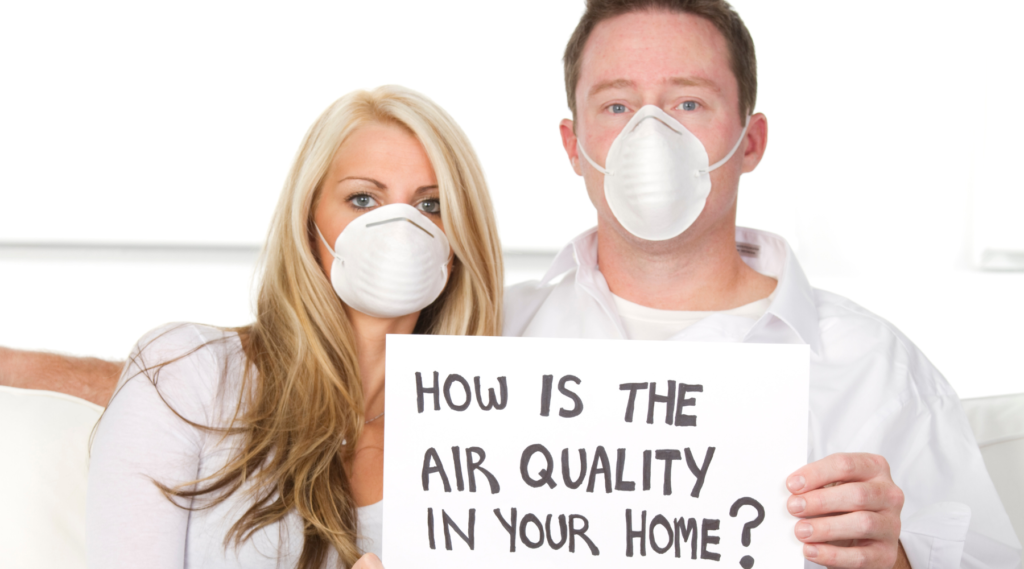
How To Improve Indoor Air Quality & Clean Air From Pollutants [GUIDE]
How To Improve Indoor Air Quality & Clean Air From Pollutants [GUIDE]
By: Brothers Equipment And Supply
Maintaining clean air in indoor environments is essential for the health and well-being of occupants. However, buildings can harbor a variety of pollutants and contaminants that lower air quality and pose risks to health.
In this comprehensive guide, we’ll explore the most common air pollutants and contaminants, top 10 solutions to improve air quality, including the use of air scrubbers, negative side effects of poor indoor air quality, and answers to frequently asked questions to help you create a healthier indoor environment.
Let get right into this!
Most Common Air Pollutants And Contaminants In Buildings
Understanding the sources of indoor air pollution is the first step in improving air quality. Here are some of the most common pollutants and contaminants found in buildings:
1. Volatile Organic Compounds (VOCs)
VOCs are emitted from various sources such as paints, cleaning products, furniture, and building materials, contributing to indoor air pollution and potential health risks.
2. Particulate Matter (PM)
PM, including dust, pollen, pet dander, and smoke particles, can accumulate in indoor spaces, leading to respiratory issues and reduced air quality.
3. Mold and Mildew
Moisture buildup in buildings can promote mold and mildew growth, releasing spores into the air and causing respiratory problems and allergic reactions.
4. Carbon Monoxide (CO)
CO is a colorless, odorless gas produced by combustion sources such as gas appliances, vehicles, and tobacco smoke, posing serious health risks when inhaled.
5. Radon
Radon is a naturally occurring radioactive gas that can seep into buildings through cracks in the foundation, leading to lung cancer risk with long-term exposure.
6. Formaldehyde
Formaldehyde is a common indoor air pollutant found in building materials, furnishings, and household products, known to cause respiratory irritation and other health issues.
7. Biological Contaminants
Biological contaminants such as bacteria, viruses, and allergens can thrive in damp environments, contributing to poor indoor air quality and health problems.
8. Pesticides and Chemicals
Exposure to pesticides and chemical pollutants used in pest control can affect indoor air quality and pose health risks to occupants.
9. Ozone
Ozone, a byproduct of certain appliances and equipment, can react with indoor pollutants to form harmful compounds, exacerbating respiratory issues.
10. Secondhand Smoke
Secondhand smoke from tobacco products contains numerous toxic chemicals and carcinogens, negatively impacting indoor air quality and health.

Top 10 Solutions To Improve Air Quality
There are several effective strategies to improve indoor air quality and reduce exposure to pollutants and contaminants. Here are 10 solutions and how they work:
1. Air Filtration
High-efficiency air filters capture airborne particles, allergens, and pollutants, improving air quality and reducing respiratory irritation.
2. Ventilation
Proper ventilation brings fresh outdoor air indoors, diluting indoor pollutants and promoting circulation to maintain healthy air quality.
3. Air Purifiers
Air purifiers with HEPA filters remove contaminants from the air, including dust, pollen, smoke, and VOCs, providing cleaner indoor air for occupants.
4. Source Control
Identifying and eliminating or reducing sources of indoor pollution, such as VOC-emitting products and mold growth, helps prevent air quality problems at the source.
5. Humidity Control
Maintaining indoor humidity levels between 30% and 50% helps prevent mold and mildew growth, as well as dust mite proliferation, improving overall air quality.
6. Regular Cleaning
Regular cleaning of surfaces, floors, carpets, and upholstery helps remove dust, allergens, and other pollutants, reducing indoor air contamination.
7. Indoor Plants
Certain indoor plants, such as spider plants and peace lilies, can help improve air quality by absorbing pollutants and releasing oxygen through photosynthesis.
8. HVAC Maintenance
Regular maintenance of heating, ventilation, and air conditioning (HVAC) systems ensures efficient operation and proper filtration of indoor air pollutants.
9. Air Scrubbers
Air scrubbers utilize advanced filtration and purification technologies to remove airborne contaminants, including VOCs, mold spores, and bacteria, from indoor air.
10. Smoking Ban
Implementing a smoking ban indoors eliminates exposure to secondhand smoke, protecting occupants from harmful chemicals and carcinogens present in tobacco smoke.
Top 10 Negative Side Effects Of Poor Indoor Air Quality
Poor indoor air quality can have significant consequences for health and well-being. Here are 10 negative side effects:
1. Respiratory Issues
Exposure to indoor pollutants can exacerbate asthma, allergies, and other respiratory conditions, leading to coughing, wheezing, and difficulty breathing.
2. Allergic Reactions
Allergens such as dust mites, pollen, and pet dander can trigger allergic reactions, including sneezing, runny nose, itching, and congestion.
3. Fatigue and Headaches
Breathing polluted indoor air can cause fatigue, headaches, dizziness, and difficulty concentrating, impacting productivity and overall well-being.
4. Irritated Eyes, Nose, and Throat
Exposure to indoor pollutants like VOCs, smoke, and chemicals can irritate the eyes, nose, and throat, causing discomfort and inflammation.
5. Skin Irritation
Skin contact with allergens, chemicals, or mold spores present in indoor air can lead to skin irritation, itching, redness, and rashes.
6. Increased Asthma Attacks
Poor indoor air quality can trigger asthma attacks in susceptible individuals, leading to wheezing, chest tightness, shortness of breath, and respiratory distress.
7. Respiratory Infections
Exposure to biological contaminants such as bacteria and viruses in indoor air can increase the risk of respiratory infections, including colds, flu, and pneumonia.
8. Cognitive Impairment
Breathing polluted indoor air may impair cognitive function, memory, and decision-making abilities, affecting academic and occupational performance.
9. Long-Term Health Risks
Chronic exposure to indoor pollutants and contaminants can increase the risk of developing serious health conditions, including cardiovascular disease, cancer, and respiratory disorders.
10. Reduced Quality of Life
Poor indoor air quality can negatively impact quality of life, causing discomfort, stress, and diminished enjoyment of indoor spaces for occupants.
FAQs About Improving Indoor Air Quality
Get answers to frequently asked questions about improving indoor air quality:
How Can I Test Indoor Air Quality?
Indoor air quality can be tested using indoor air quality monitors, home test kits, or professional testing services to assess pollutant levels and identify potential issues.
Do Air Purifiers Remove VOCs?
Some air purifiers equipped with activated carbon or charcoal filters can effectively remove VOCs and odors from indoor air, improving air quality.
How Often Should I Change Air Filters?
Air filters should be checked regularly and replaced according to manufacturer recommendations, typically every 3 to 6 months, to maintain optimal filtration efficiency.
Are Air Scrubbers Effective for Mold Removal?
Air scrubbers with HEPA filters and UV-C light technology can effectively remove mold spores and airborne contaminants, aiding in mold remediation efforts.
Can Indoor Plants Improve Air Quality?
Certain indoor plants can help improve air quality by absorbing carbon dioxide and releasing oxygen, as well as removing pollutants like formaldehyde and benzene from the air.
Do Dehumidifiers Help with Mold Prevention?
Dehumidifiers help reduce indoor humidity levels, inhibiting mold and mildew growth and preventing moisture-related issues in buildings.
How Can I Reduce Dust in My Home?
Reducing indoor dust requires regular cleaning, vacuuming with HEPA filters, minimizing clutter, and using air purifiers and dust mite covers on bedding and upholstery.
Can Indoor Air Pollution Affect Children and Pets?
Children and pets may be more susceptible to the health effects of indoor air pollution due to their smaller size, developing respiratory systems, and increased exposure to pollutants.
Is Opening Windows Effective for Ventilation?
Opening windows can improve ventilation and air circulation, allowing fresh outdoor air to enter and dilute indoor pollutants, particularly in well-ventilated areas.
Should I Use Air Fresheners to Mask Odors?
Air fresheners may temporarily mask odors but can introduce additional chemicals and VOCs into indoor air, potentially worsening air quality.
Conclusion
Improving indoor air quality is essential for creating a healthy and comfortable indoor environment.
By addressing common pollutants and contaminants, implementing effective solutions such as air filtration, ventilation, and air scrubbers, and staying informed about preventive measures, you can create a cleaner and safer living or working space for occupants.
If you have any questions about our article, “How To Improve Indoor Air Quality & Clean Air From Pollutants [GUIDE]” or need air scrubbers or dehumidifiers, contact sales@brothers-equipment.com or chat with us on LiveChat or social media.
